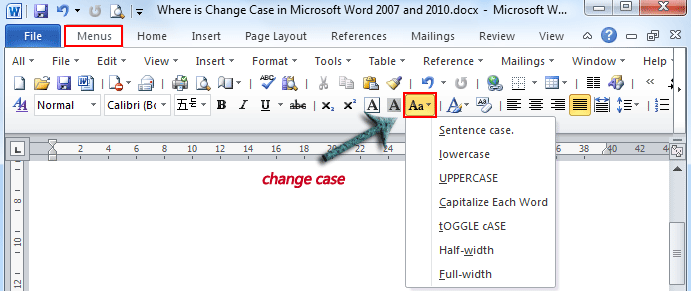
Then press “7” and then choose an option, such as “S” for Sentence case, “l” (a lowercase L) for lowercase, “U” for UPPERCASE, “C” for Capitalize Each Word, or “t” for tOGGLE cASE. If you want to use your keyboard to change the case on some text, select the text and then press Alt+H to activate the Home tab.
#SMALL CAPS IN WORD 2019 HOW TO#
RELATED: How to Disable Automatic Capitalization Correction in Microsoft Word The selected text changes to the selected capitalization type. You can highlight the affected text and use the tOGGLE cASE option to correct the capitalization.įor our example, we’re going to make the selected text all caps, or UPPERCASE. Toggle Case may seem like a strange option, but it’s useful if you’ve been typing text without realizing the Caps Lock key is on and the autocorrect option for correcting accidental usage of Caps Lock key is not on. tOGGLE cASE: This makes the first letter of every word lowercase and the rest of the letters UPPERCASE.Capitalize Each Word: Capitalizes the first letter of every word.Perhaps you can invest a little more time or money on cover design, sales and marketing, or learning how to improve writing craft. Time is money, so when you do the job instead of asking other professionals to do it, your book budgets goes further. UPPERCASE: Makes every letter UPPERCASE. Why you should format with styles Using styles gives you control over design, consistency and formatting time.lowercase: Makes every letter lowercase.Sentence case: Capitalizes the first letter of the first word in a sentence.The following types of capitalization are available: Select the desired type of capitalization from the drop-down menu.

Then, click the “Change Case” button on the Home tab. Instructions in this article apply to Word for Microsoft 365, Word 2019, Word 2016, Word 2013, and Word 2010. To change the case on text in a Word document, select the text you want to change and make sure the Home tab is active. Instead, use the Word Change Case tool to change some or all of the text to a different case, such as all caps. Click OK on the AutoCorrect dialog box and then again on the Word Options dialog box to close both dialog boxes.

Add any other exceptions to the Other Corrections tab. Did you type a line of text and then realize that it should have been capitalized differently? Instead of typing the line again, you can quickly and easily change the case of any text in Word without retyping it. The INitial CAps tab allows you to add exceptions for words, like IDs, with two the first two letters capitalized, but not the rest.


 0 kommentar(er)
0 kommentar(er)
